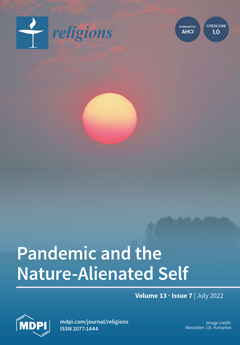The article offers a socio-legal analysis of the recent case on freedom of/from religion in Italy, the
Coppoli judgment of the Italian Supreme Court, which grants public schools the autonomy to manage religious symbols. The new ruling is discussed in the shadow of
[...] Read more.
The article offers a socio-legal analysis of the recent case on freedom of/from religion in Italy, the
Coppoli judgment of the Italian Supreme Court, which grants public schools the autonomy to manage religious symbols. The new ruling is discussed in the shadow of the
Lautsi case, examining the shift from the discourse of “passive religious symbol” to the framework of “respect of different sensibilities” in pluralistic classrooms. In doing that, first, we provide a sociological framework for the study of “passive religious symbols” from a multiculturalist and religious freedom perspective. Second, the
Coppoli case is contextualized within political, normative and judicial Italian contexts following the
Lautsi jurisprudence. Third, we revise the model of “secularism as a method of dialogue” considered by the judges as important in claiming individual freedoms of/from religion in the multicultural classroom. The final part of the article provides a discussion and critical considerations about the
Coppoli case, problematizing the future challenges of managing religious diversity in Italian public schools. We argue that the dynamic of freedom of/from religion’s jurisprudence in the
Coppoli case endorses an additive model of accommodating diverse cultural and religious identities in public schools.
Full article





